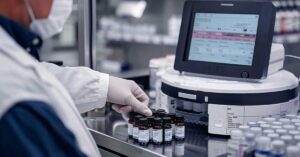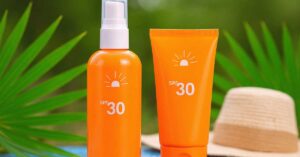Background:
Health Canada issued three interim orders to allow the importation and sale of medical devices used to diagnose, treat, mitigate, or prevent COVID-19. Interim orders were issued to speed up access to these medical devices in Canada during the pandemic. Interim Order No. 3 Concerning the Importation and Sale of Medical Devices for Use about COVID-19 (IO No. 3) became effective on February 21, 2022, and will expire on February 21, 2023.
The Regulations Amending the Medical Devices Regulations (Interim Order No. 3 Respecting the Importation and Sale of Medical Devices for Use with COVID-19) (Regulations) went into effect on February 22, 2023. Part 1.1 of the Medical Devices Regulations contains these regulations (MDR).
FDA enacted these regulations to continue accelerated access to COVID-19 medical devices during urgent situations.
What are the new Covid-19 Medical Device amendments and what do they do?
FDA Regulations:
- create a permanent regulatory framework for COVID-19 medical devices.
- continue to maintain most of the flexibilities introduced by IO No. 3 for devices that are on the List of Medical Devices for an Urgent Public Health Need about COVID-19 (UPHN list)
Part 1.1 of the MDR will provide the same pathway as under IO No. 3 to issue authorization for:
- new COVID-19 medical devices that are on the UPHN list.
- expanded use indications added by the Minister related to COVID-19 for existing devices licensed or authorized under the MDR
- COVID-19 medical devices that are on the UPHN list and leverage an authorization by a regulatory agency that is on the List of Regulatory Agencies for Subsection 68.11(4) of the Medical Devices Regulation
Check out the following guidance document: Medical devices for use with COVID-19
Need help navigating the MDR HC Amendments?
How will the new MDR regulations impact authorization holders?
Part 1.1 of the MDR permits manufacturers, importers, and distributors to continue importing and selling COVID-19 medical devices authorized under IO No. 3. As an example:
- Under these Regulations, all active authorizations under IO No. 3 are considered authorizations for importation and sale.
- If the device is on the UPHN list, the manufacturer is not required to take any immediate action.
- Manufacturers’ applications submitted under IO No. 3 for which we have yet to issue a decision are considered active applications under these Regulations.
- Applications for amendments to authorized devices and new applications for authorization are examples of these.
- The manufacturer is not required to take any immediate action.
The following continues to be valid following the effective date of the Regulations:
All requests for additional information or materials made by the Minister are regarded as requests under these Regulations, including those for the expanded use indications on the List of Medical Devices for Expanded Use about COVID-19 and any outstanding terms and conditions on interim order authorizations.
How with the MDR regulations impact authorized devices, not on the UPHN list?
To continue importing and selling a COVID-19 medical device that is not on the UPHN list, authorization holders must meet extra requirements. The specifications will change depending on the device’s class. We will notify the authorization holder of any extra requirements that take effect when a COVID-19 medical device is removed from the UPHN list.
Following the removal of a COVID-19 medical device from the UPHN list, the extra requirement will be as follows:
- Manufacturers of a Class I COVID-19 medical device may continue to import and sell their medical device if they:
- apply for a medical device establishment license (MDEL) within 120 days after the day on which the device ceases to be on the UPHN list.
- obtain an MDEL.
- pay associated MDEL fees.
- Manufacturers of Class II, III, or IV COVID-19 medical devices may maintain their authorization if they:
- submit a certification contract to the Minister, within 120 days after the day on which the device ceases to be on the UPHN list, to indicate that the certification process under the Medical Device Single Audit Program (MDSAP) has been initiated
- submit an MDSAP-compliant quality management system certificate within 2 years after the day on which the device ceases to be on the UPHN list
- pay all applicable fees.
- comply with annual review requirements.
- report information concerning a serious risk of injury to human health in specified foreign jurisdictions.
- prepare summary safety reports.
For more information on fees and applications check out the following guidance documents:
- Fees in Respect of Drugs and Medical Devices Order
- Fees for the review of medical device license and COVID-19 authorization amendment applications
How will the MDR regulations affect purchasers and users of Covid-19 Medical Devices?
Customers and users are unaffected because devices allowed by Interim Order No. 3 may still be supplied by the Regulations.
Anyone who sells or imports a device with an interim order authorization for use in Canada must have a medical device establishment license, aside from the device manufacturer (MDEL). Retailers and healthcare institutions are exempt from requiring an MDEL.
Consult the following guidance document for details on who needs to possess an MDEL and how to apply: Guidance on medical device establishment licenses (GUI-0016).
Consult the following guidance paper to comprehend and adhere to the legal requirements for summary reports: Guidance on summary reports and issue-related analyses for medical devices
Health Canada amended sections 61.4 to 61.6 of the MDR (summary reporting provisions) to:
- align with the summary reporting provisions used in Part 1.1 of the MDR.
- clarify the language found in the summary reporting provisions.







